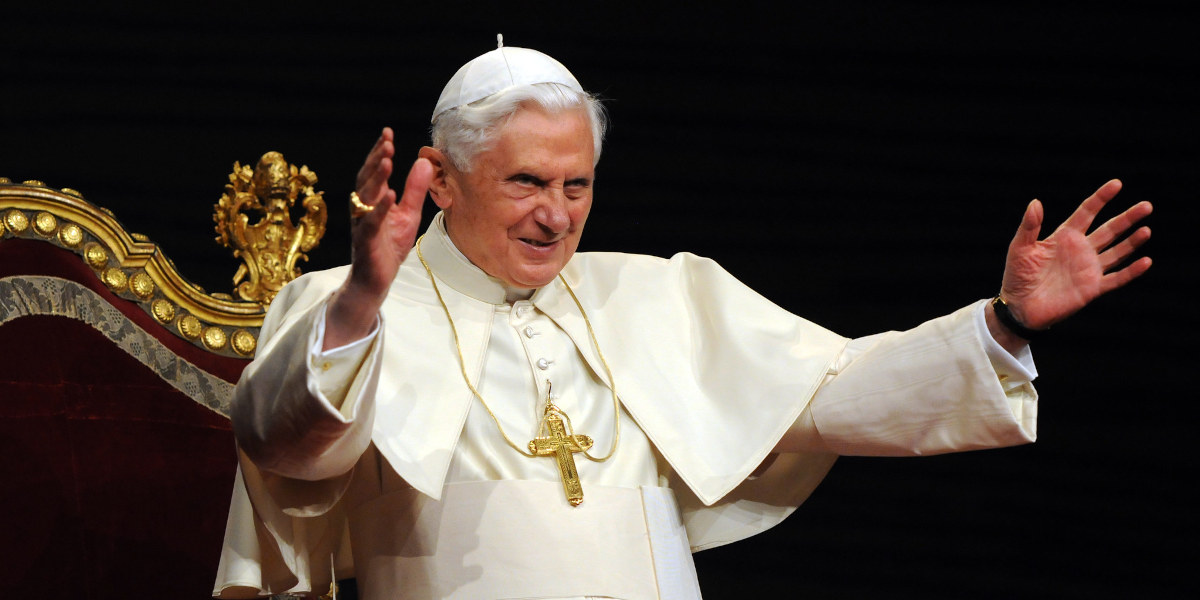When the Pope lands at Heathrow, he should be greeted on the tarmac by representatives of the British left reading him a loyal address from a lovingly illuminated scroll. The address should express the left’s undying gratitude for the huge numbers of atheists, materialists, dissidents, revolutionaries, assorted deadlegs and drop outs created by one of the nastiest authoritarian outfits on the planet, namely the Catholic church.
It’s true that creating atheists and radicals was never the Vatican’s intention. But it has certainly been among its major effects and we would be churlish to look a gift horse in the mouth. The Catholic church has done more than Richard Dawkins, Ian Paisley, humanist societies and Marxist materialists put together to discredit the whole idea of organised religion, and there will be many who feel that it deserves our heartfelt thanks for its endeavours.
The British left has also numbered some prominent lapsed Catholics among its members, which is not as surprising as it may seem.
The category of ‘lapsed’ Catholic, by the way, is just a cunning ruse on the part of the church to prevent anyone from ever leaving it. Rather than being expelled or resigning, you are simply shifted from one category to another, like someone who becomes a country rather than town member of the Athenaeum. In fact, in some respects ‘lapsed’ is a higher distinction than ‘loyal’ (think of Graham Greene), though not quite as high as ‘saint’.
As far as saints go, there is a problem in Anglo-Saxon nations such as Britain. When someone is up for canonisation (ie being made a saint), they need to have performed at least one miracle from beyond the grave in order to make the grade; and in the geographical distribution of miracles, Britain comes dismally low on the scale. This is because we are a godless, sceptical bunch compared, say, to Spaniards and Italians, where the miracle count, like the number of sunny days, is a good deal higher.
Cardinal Newman is currently up for canonisation, but it is proving embarrassingly difficult to scrape together the requisite number of miracles. The commonsensical British simply aren’t superstitious enough.
There are far fewer weeping statues, bleeding icons, roses that never wither and old ladies whose cancerous tumours disappear without trace on kissing a portrait of Pope Pius XII (the one who fervently supported the Nazis). As one moves northwards from Naples to Newcastle, the problem becomes glaringly apparent. Perhaps the Pope can fix this spot of local difficulty when he arrives.
Ex-papist left
So, to resume, why is it not surprising that so many leftists should be former papists?
For one thing, Catholicism teaches you to think in communal, institutional terms. Liberal or Protestant individualism is alien to this. You just don’t grow up thinking in those terms. It is also true that the great majority of Catholics in Britain stem from working-class Irish immigrant stock, and are thus more likely to incline to the political left than, say, middle-class Anglicans.
For another thing, Catholics are properly unafraid of rational analysis. They are taught that reason is not at odds with faith, and they believe, unlike postmodernists, that the truth is vitally important. This is why, like leftists and unlike liberals, they are not particularly nervous of ideas and doctrines. They see them simply as a distillation of what millions of common men and women over the centuries have found themselves able to believe.
Finally, the Catholic church has a vigorous tradition of social thought, some of it anti-capitalist. You are urged to think of religious faith in terms of the practical social world, not in terms of some individual inner light.
It’s no accident, for example, that so many nurses, medics and community workers in the global South are Irish in background. The Irish Catholic church has a vile and disgusting record of child abuse yet an honourable one of nursing and educating the sick and deprived in the non-European world. This tradition of sending out missionaries dates back to the early Middle Ages, and Bono and Bob Geldof are among its latest examples. Both men are self-advertising versions of Irish missionaries. That they both hail from Dublin may be coincidental, but I don’t think so. They would have attended schools that drummed the notion of social conscience and responsibility into their skulls.
Making priests marry
One suggestion for tackling the child abuse problem is that when the Pope arrives in Britain, he should hold public ceremonies in which thousands of Catholic priests are forcibly, simultaneously married, as the Moonies do. Those who refuse to be married should be poisoned on the spot. Gay members of the clergy would be allowed to opt for civil partnerships, but nobody could remain celibate. The marriages, to be sure, would be rather hard on the women involved, so each wife would receive some modest compensation (let’s say £10 million apiece) by the Vatican selling off its treasures under pain of being dissolved.
This is not in fact the smartest of ideas. Most women would rather marry a badger than a Benedictine, and are curiously averse to being coerced into marriage, even for a constructive end. In any case, this wouldn’t end the abuse of small children. For one thing, quite a few Catholic clergy ignore their vow of celibacy. For another thing, it is not celibacy but paedophilia that drives these men to commit the crimes they do.
Here, perhaps, we should pause for a moment to take thought. Why have so few commentators raised the question of why paedophilia is so rampant among the Catholic clergy? Why don’t you find the same fearful epidemic of it in say, Lloyds Bank or the BBC?
It’s true that working as a priest in a parish gives paedophiles some access to children, but this can be much exaggerated. Clerics don’t spend all their time rehearsing boys’ choirs or visiting the junior school. It’s also true that the clerical collar traditionally conferred on these men a status above suspicion. But this is the exact reverse of the truth today. In Ireland nowadays, some people might cross the street when they see a priest approaching. In the old days it used to be a British landlord.
The point, surely, is that training of Catholic priests has been traditionally designed to ensure their sexual infantilisation. It is the kind of background geared to churning out young men incapable of grown-up relationships, who then turn to children instead. Children don’t make mature emotional demands you can’t fulfill.
Fortunately, this problem looks like solving itself in the long run. Last year, the number of clerical students in Ireland who were ordained to the priesthood was in single figures. Some decades ago it would have been in the hundreds.
The Catholic priesthood is dying on its feet, and the latest scandals to afflict it are likely to help it to its grave. At one level, the church will no doubt patch up the situation and bounce back. At another, deeper level, it will never recover. And there are a great many men and women, some of them permanently traumatised, whose only prayer will be one of gratitude for that fact.










